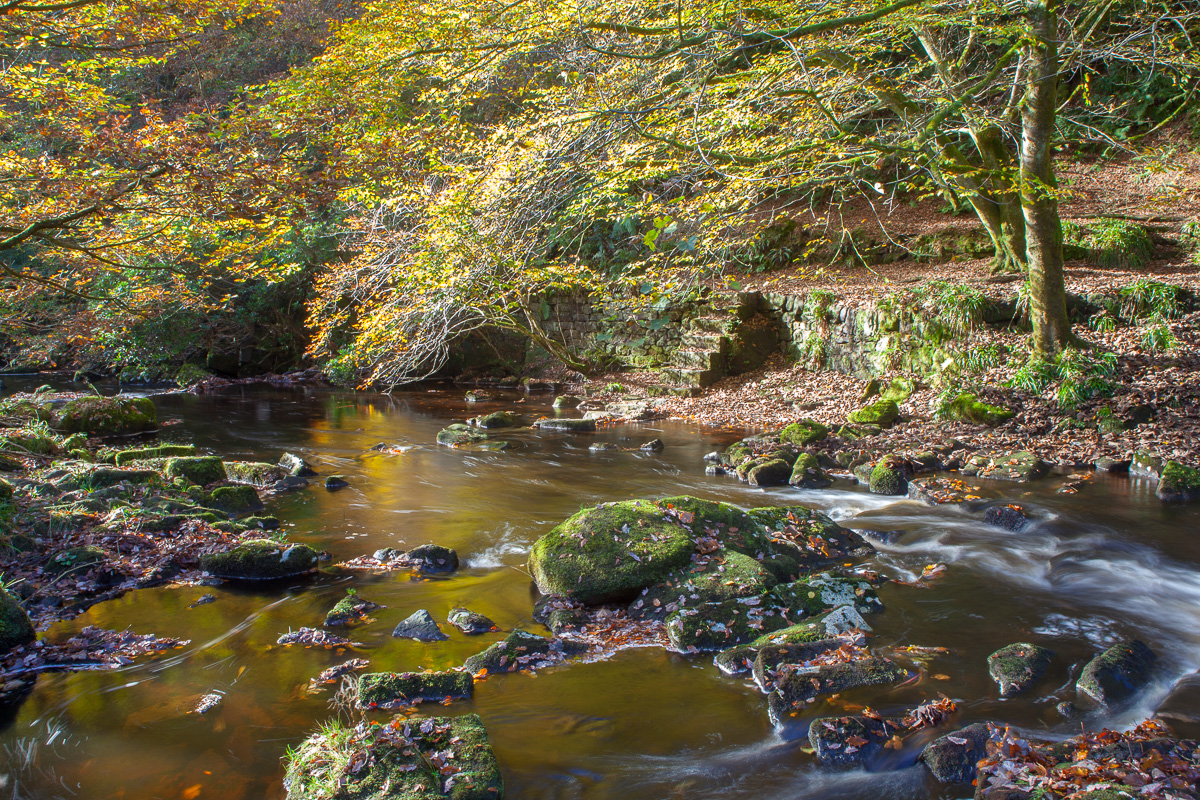With a sharp drop in temperature and strong winds forecast for the end of the week, I thought I’d better bring forward my planned photo-trip to the woods at Hardcastle Crags. The idea was to photograph autumn colours, not bare trees.
It was a delightfully sunny morning, but the bottom of the valley was in shade, so I headed up through the trees on the north side of the valley, looking for sunlight. I spotted a couple of jays hunting for acorns, and was almost deafened by the alarm-calls of nuthatches, initiated no doubt by my sudden(ish) lumbering presence. My stinking cold, which I’ve had for the last week, has reached the ‘chesty’ phase, and I was even more short of breath than usual as I trudged up the steep, slippery slope, burdened with a rucksack of camera gear and a tripod. Having grabbed a few shots/breathers on the way, I finally made it to the track along the tree-line, and headed west looking for views. I eventually came to the rocky outcrops with views across the treetops, and took some more shots, then continued along the track through deciduous trees, then pines, then down through more deciduous trees to Gibson Mill. On my way down, I became aware of having twisted my ankle, though I didn’t remember actually twisting it.
The sun was in completely the wrong direction (front and centre) for the classic/clichéd shot of the mill across the millpond, so I turned through 90° and took some nice shots of autumnal trees reflected in the water. I then clambered down the steps at the side of the millpond to take some slow-shutter-speed, tripod-assisted shots of the weir and river. In the process, I nearly fell arse-over-tit on the slippery boulders at the foot of the weir. As usual with photographs of moving water, I experimented with various shutter speeds. Also as usual, I discovered ⅛ second, or there about, seemed to work best.

Before limping back to the car along the riverside path, I grabbed a quick mug of tea, and a chocolate and walnut brownie from the Weaving Shed café at the mill. The mill prides itself on being off-grid, relying on hydro- and solar-power for its electricity, firewood for heating, and compost-loos for other essential business. If only every building in Britain could be equally sustainable. Unfortunately, few other buildings in Britain come with their own millponds, and are set amid 400 acres of managed woodland.
It was a lovely walk, and I captured some nice shots, but I really could have done without twisting my ankle.
Leave a Reply